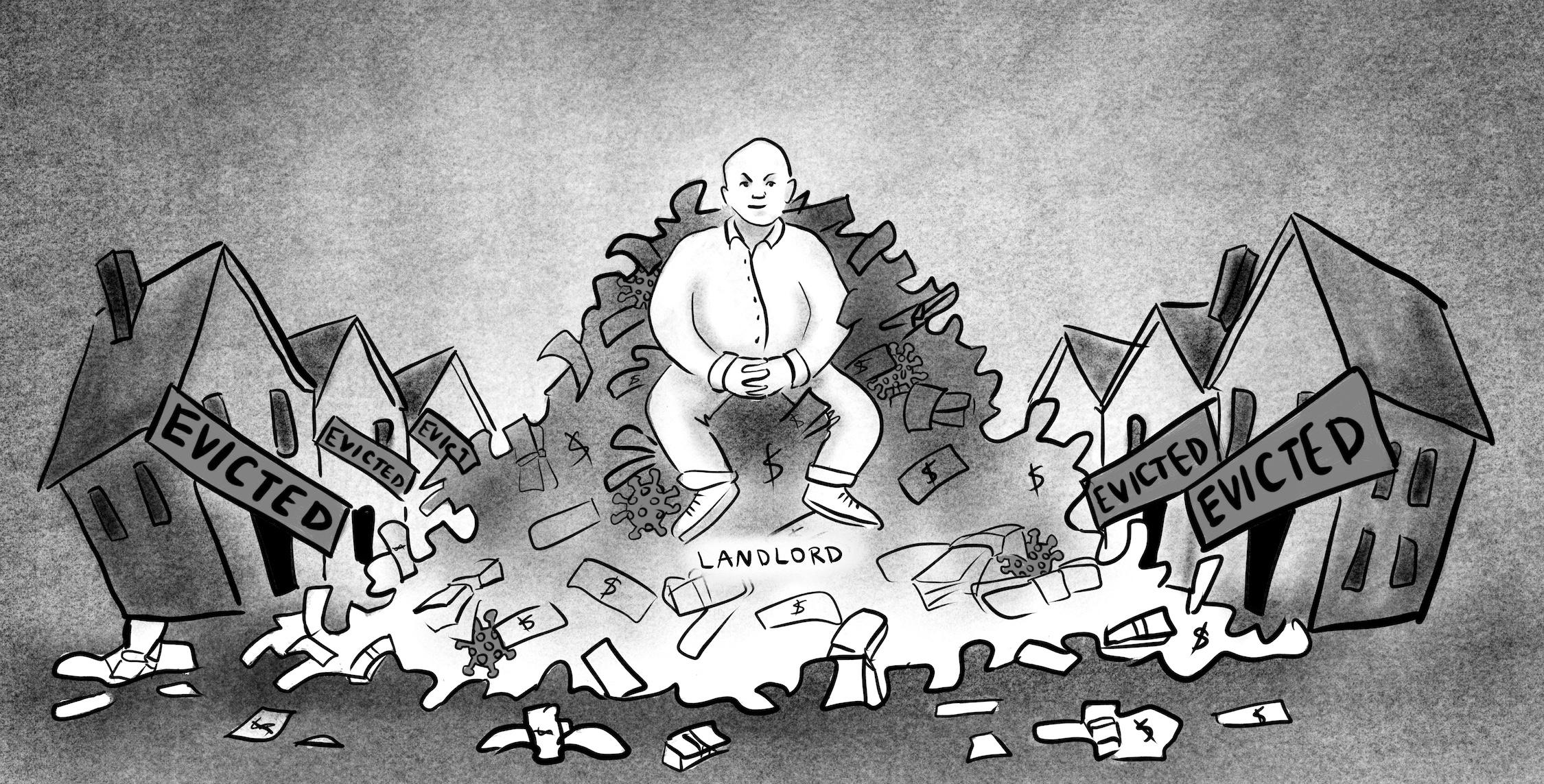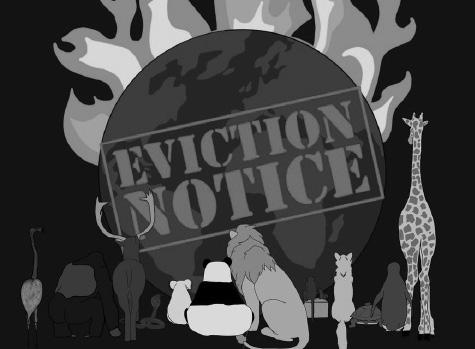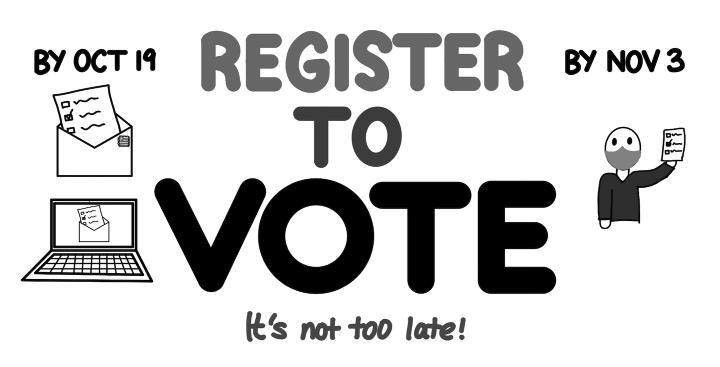
18 minute read
ARTS
from 2020-10-14
Why you should revisit ‘The Birds’ this Halloween
JACOB LUSK Daily Arts Writer
Halloween is a month-long celebration that spans decades of movie history, from Southern Gothic to psychothriller. The film beat embraces this history, dedicating each week of October to a different time period of horror. This series celebrates every nightmare you had when you were ten, every creak in the floorboards of an old house, every piece of candy stuck to the inside of your pillowcase and everything that keeps you up at night. For this week, we’re sticking to the beginnings of modern horror: Hitchcock’s reign of the ’60s. —Mary Elizabeth Johnson, For The Daily
When I was seven or eight, I went trick-or-treating dressed as a bird. A golden eagle, to be exact. My costume had broad wings, a tawny, beak-bearing hood, a feathered tunic — the whole shebang. Many a caw and shrill shriek were uttered that night as I glided from house to house sinking my papier-mâché talons into wads of Swedish Fish and gummy worms.
I hadn’t asked to be a bird that Halloween. I believe I wanted to be a chimera — a three-headed beast from Greek myths that combines the likenesses of a lion, goat and serpent. The year before I had been a griffin — another chimeric creature smooshing together the features of a lion
ROSA SOFIA KAMINSKI Daily Arts Writer
When we think of live music, we often think of dancing bodies with all eyes focused on the musicians. The experience is an immersive one, an event that demands attention and proximity. While COVID renders many incarnations of live music dangerous, there’s an unlikely source of live music that remains standing at the University of Michigan and that’s the carillon bells.
Carillon bells are a set of bronze bells that one can play through a keyboard and pedalboard. There are two sets at the University: the Charles Baird Carillon in Burton Memorial Tower, and the Robert and Ann Lurie Carillon on North Campus. At first glance, carillons don’t seem to be the most accessible form of music. Few know how to play them; they are rare and expensive, sit high above your head and are hardly something you can dance to. And yet, they’re revealing themselves to be one of the most accessible forms of music. No tickets, no special knowledge required — if you happen to be walking in their vicinity, you are in automatic attendance of the show.
“It’s a really powerful instrument ... in terms of shaping the whole landscape and an eagle. My sweet mother, not really knowing what a griffin or a chimera was but armed with Google Images and a sewing machine, obliged my desires by hand-crafting my costumes. I guess chimera was a head too far, because that year she scissored the leonine bits off my griffin costume of yesteryear to produce an eagle and that was that.
Thankfully, in addition to being a mythology kid, I was a bit of a bird nerd, so this alternative went off without a hitch.
A baker’s dozen years later and I think my sweet mother may have been onto something, as has been made clear to me by Hitchcock’s 1963 “Psycho” follow-up “The Birds.” Yes, another Hitchcock in our Halloween series, but this time it’s a technicolor terror — one of the OG “daylight horrors,” a genre that reached horrific heights with “Texas Chainsaw Massacre” and “The Wickerman” in the ’70s, went dormant for a few decades of drafty, dark houses and woebegone woods, only to be reinjected into the popular consciousness again with last year’s “Midsommar.”
“The Birds” takes place in the isolated seaside town of Bodega Bay, California. In Tippi Hedren’s (“The Ghost in the Whale”) debut, Melanie Daniels, a devil-may-care socialite with way too much time on her hands, arrives in Bodega Bay to deliver lovebird parrots to her own prospective of a place,” first-year Civil and Environmental Engineering PhD student Eva Abalgalhiti recently told The Daily. “You play something, and everybody has to listen to that.” The audience is everywhere.
The carillon world, Abalgalhiti explained, is really small. Everyone knows everyone — she’s met the composers of pieces she plays that can correct her mistakes and help her further interpret the music. From the outside looking in, one might assume it to be an elitist community. Carillons obviously aren’t available everywhere. They most often make an appearance at prestigious and expensive institutions. But, Abalgalhiti explained, “that’s not necessarily the case. It’s more a matter of we need more people who play carillon to be excited about sharing that.” Of course, carillons are not easy to gain access to, but once you are part of an institution that has a set, it is surprisingly easy to get involved. Abalgalhiti did so with very little musical training beforehand.
Performing for an audience so far away, often including people busy in transit, seems like an odd experience. One doesn’t get to feed off the energy of the crowd, like many musicians do in concert. Instead the artist sits alone in their tower. The isolation — something not often found in music — may seem extreme, but lovebird Mitch Brenner (Rod Taylor, “Inglourious Basterds”) as an elaborate practical joke. In fact, for the first half of this movie that’s really all it is — a ’60s romcom with an inordinate fondness for birds.
“The Birds” doesn’t feature any murderous dolls or bodyhopping aliens or undead shades that just really love to hang around Victorian homes and imitate the sounds of doors closing for some reason. Rather, when shit hits the fan — and it does — it’s a bunch of birds. Not birds from hell or birds made giant or birds under the sway of some mysterious birdman — just a bunch of seagulls and sparrows.
“Jaws” would do something similar almost two decades later, as after all, the shark in “Jaws” is nothing more than a shark with a particular palette, but at least that shark was a shark. The birds are just birds.
I need not waste time explaining Hitchcock’s expertise in crafting a tense, thrilling scene. He’s got a whole adjective named after him that gets thrown around at any modern thriller some filmbro with a blog thinks is neat. But damn it if “The
Birds” isn’t Hitchcockian. As alluded to earlier, the film largely takes place in broad daylight. The film is not scary — it’s hard for old movies to be scary; even “The Exorcist,” which reportedly induced a rash of vomiting when seen in theaters back in the ’70s, while still excellent, is hardly pukeAbalgalhiti offered a touching story to combat this impression. During the recent GEO strike, she watched the picket lines from above and played a few well-known union songs for her concert, to hearten the crowd.
“Everybody on the ground, apparently, was like, ‘Look what’s happening!,’” Abalgalhiti said. “I think people take more notice now, of what’s going on with the carillon ... It can be an opportunity to inject your personal beliefs, or whatever, into the campus scene.” Demonstrations like this can provide a strange sort of heavenly support for campus actions like the strike.
Having just arrived at the university, Abalgalhiti is still getting to know the carillon program, but has enjoyed it thus far. The community is filled with passionate individuals. They are innovative in finding ways to drive the craft forward. She advises anyone interested in carillon or any collaborations to come forward and seek out a way to get involved. There are lots of ways to participate.
“What I think about a lot is how can you use carillon to kind of project something about what you believe, or send out a message of sympathy or welcoming or care?” Abalgalhiti said.
Daily Arts Writer Fia Kaminski can be reached at fiakamin@ umich.edu. worthy by today’s standards. So, while “The Birds” isn’t the movie to get your scream out during on Halloween night, the careful use of sound (the pitter patter of wings takes on a whole new color), score and blocking make its tension palpable even 60 years later.
The film demonstrates that even the oh so mundane can be oh so horrific. In a special teaser trailer, Alfred Hitchcock himself cheekily expounds on the “conspicuous part” humanity has played in our feathered friends’ “noble history”: “Thousands of years ago, man was satisfied merely to steal an egg from a nest and use it for food. Now he has perfected this process by imprisoning each hen in a cage, and by scientifically manipulating the lights so that she doesn’t fall into the rut of the old 24-hour day. Thus, he can induce the bird to reach fantastic heights of egg production.”
After the first bird
JOSHUA THOMAS Daily Arts Writer
In the world of “South Park,” the only cardinal sin is selfrighteousness — the attitude that personal beliefs and convictions are completely unassailable. Whether it’s religion or race, politics or personality, Trey Parker and Matt Stone (“The Book of Mormon”) always manage to blur the lines between sacred and immoral, showing that both sides of any debate are odious.
As Donald Trump skyrocketed to national attention and eventually the presidency in 2016, the creators of “South Park” were wary of being too critical of one figurehead. For “South Park,” the self-righteousness of Trump fanatics is just as bad as the selfrighteousness of liberals. But as a cartoon version of Trump literally blows torches at a scientist with a potential cure for the coronavirus, the new “South Park” sends a clear message: They are done straddling the fence, they are done poking fun at “both sides,” they are calling it for what it is and they are not pulling any more punches.
Satire in the Trump era is a difficult endeavor. It’s hard to poke fun at both sides when the stupidity is so one-sided. Despite this, the Season 24
attacks, a skeptical armchair ornithologist explains that there are over five billion birds in the United States, and over 100 billion across the five continents of the world (not sure what happened to the other two).
We can all do the math at this point. Birds are scary.
Where does this leave “The Birds”? A horror-thriller ecofable? Maybe so. The opening credits are accompanied by a cacophony of bird noises that begin to uncannily resemble the sound of gunfire and general warfare. Does this suggest the film is actually an allegory for wartime uneasiness? Likewise, maybe so. This was only a few years after the second Red Scare, and the ubiquity and utter banality of birds marries well with the notion of a ubiquitous and undercover cadre of communists. The gender roles also get a bit wonky — it has a robust female cast that loses some of its glamor premiere of “South Park” still manages to shed criticism on both Trump and his opponents with limited success. The premiere especially focuses on the “abusive relationship” between Trump supporters, Democrat politicians and
Satire in the
Trump era is a difficult endeavor.
It’s hard to poke fun at both sides when the stupidity is so one-sided. Trump himself. Before 2020, this seemed like a successful formula. However, in 2020, be it police brutality, the pandemic or economic implosion, doomscrolling is a fact of life and Donald Trump is the cause of roughly 90% of it. Responding to the changing times, South Park has done something it has never done before: It has picked a side.
DESIGN BY SHUCHEN WEI
as you realize each woman has an unhealthy obsession with our strapping Mitch. Does this make “The Birds” an antifeminist screed against the independent, counter-cultural woman? Disappointingly, maybe so. An argument can be made that the film is selfreflective, but Hitchcock doesn’t exactly have a sterling reputation in this respect.
All that being said, Halloween 2020 is going to be a whole other kind of scary. Trick-or-treating and costume parties, with either handmade bird costumes or more traditional fare, is ill-advised. Snuggling at home with a heap of candy is the move, and with spooky season taking over all four seasons this year, the tense but toothless old-timey scary “The Birds” might be just the right way to keep the spirit alive on a Halloween that has already got the scary in spades.
Daily Arts Writer Jacob Lusk can
Live music’s last stand: the carillon bells at UM

‘South Park’ done pulling punches on Donald Trump
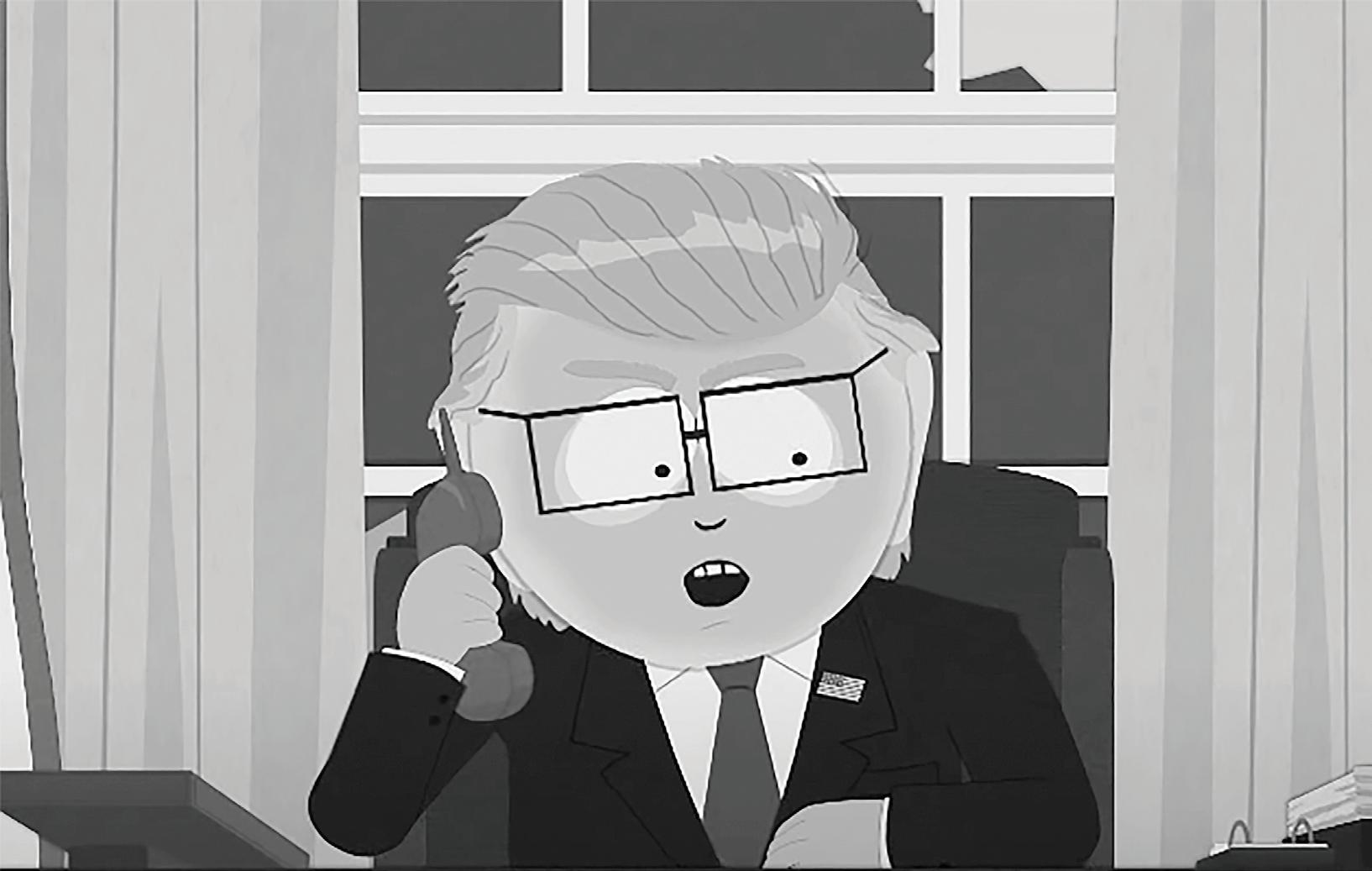
be reached at luskja@umich.edu. COMEDY CENTRAL
In the first few moments of the pandemic special, it is clear that things are going pretty poorly for the residents of “South Park.” The entire town is at each other’s throats as businesses close and social isolation slowly drains the town of its sanity. In this special, Donald Trump is (tellingly) absent, save for two scenes. In the first scene, Stan Marsh (voiced by Parker) tries to call the President for help in dealing with the crises in “South Park.” He responds that the chaos is his plan. Creating a villain so purely silly and evil is definitely unorthodox for “South Park,” but in this political environment, it’s extremely fitting. Considering the importance of our current events, “South Park” chooses to be extremely explicit.
The “South Park” pandemic special is the first episode in what might be a new era for the long-running animated series. Instead of endlessly critiquing “both sides,” the show is actually standing on a set of principles and giving the audience a clear and specific message. 2020 is a year that has already changed many aspects of our society. In light of the horrific consequences of Trump’s action and inaction, the time for criticizing both sides equally is over. The new “South Park” makes that clear, and does not hold back at all.
Daily Arts Writer Joshua Thomas can be reached at realjt@umich.edu.
statement statement
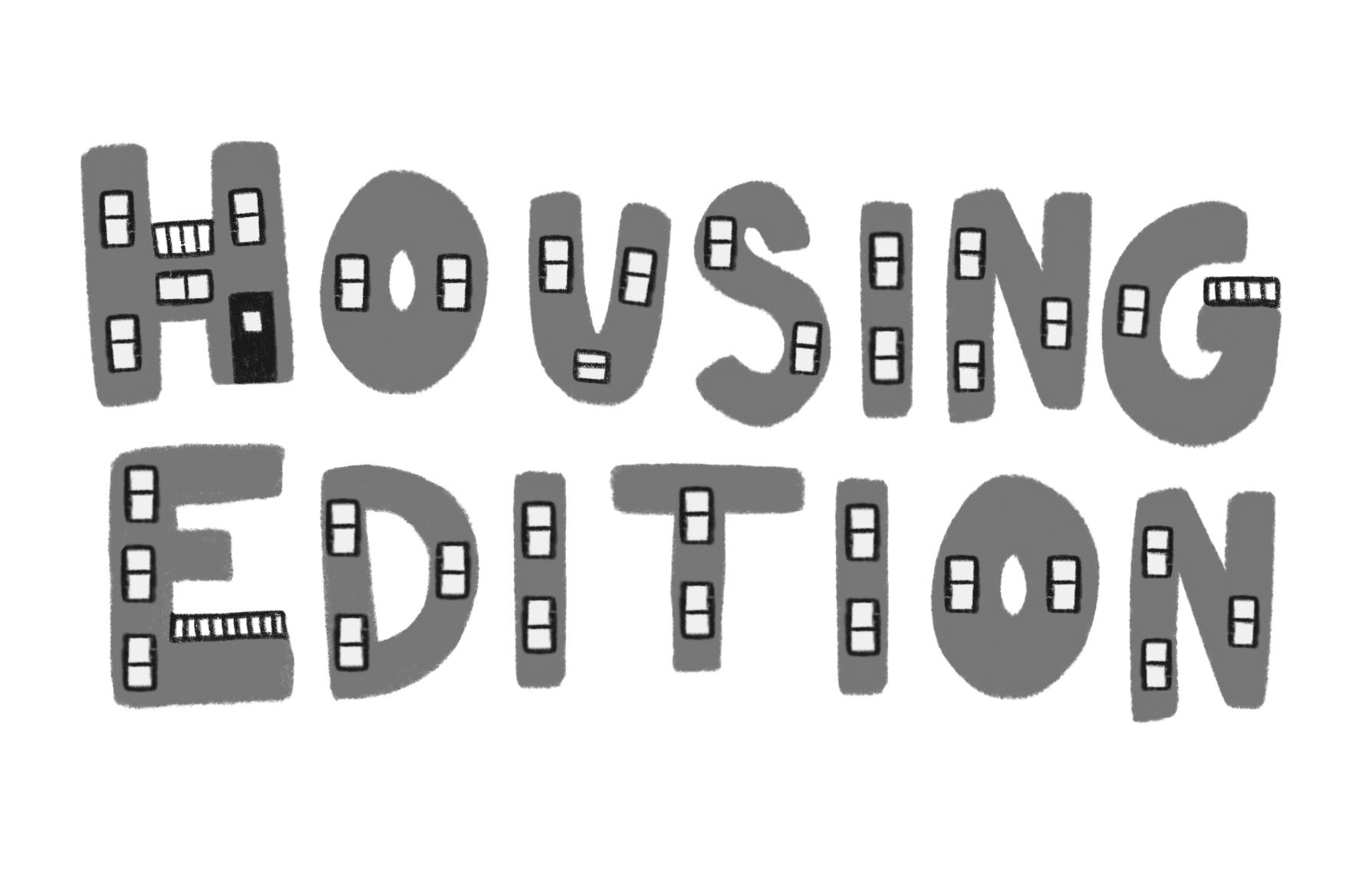
Sharing more than a space
ILLUSTRATIONS BY EILEEN KELLY
BY MAGDALENA MIHAYLOVA, STATEMENT MANAGING EDITOR
The nerves reminded me of the feeling you get before a job interview. With a light flutter in my stomach, I swung my backpack over my shoulder and walked into the East Quad dining hall. I spotted the girls almost immediately, the five of them giggling over half-eaten pizza and shredded brussels sprouts, their close friendship apparent. Approaching them, I jokingly thought to myself, Should I have brought a resumé?
It was fall of my freshman year and these five girls, all already friends and one of whom lived in my hall, had invited me to dinner to “get to know them better,” ssbefore we all decided to sign onto a lease for a house on East University Avenue the following year.
At the time, this process seemed only natural — of course, before deciding to live together, one should make sure anyone joining in who isn’t your friend is at least somewhat compatible with the group. But it’s difficult to escape the uncomfortable social dynamics that occur among college freshmen trying to find their people while living out the prophecy listed in so many movies and TV shows about young people: The need for a big group of friends with whom to get drunk, share deep heart-to-hearts, cook dinner and have board game nights. Like many freshmen, I wanted this kind of relationship, and I figured the easiest way to achieve it was through shared space — I figured, if we were living together, the prophecy would simply fulfill itself.
Yet, it was only November, and I had barely been on campus long enough to foster the kind of connections necessary for the “Best Girl Group Ever” experience. Enter the pseudo-vetting process that made me doubt if I was cool enough to warrant living with.
Ultimately, I lived with those girls during my sophomore year, and while we shared some of those movie-magic moments of tailgating on our front porch together or watching The Bachelor on Monday nights, we also shared moments of arguments over politics, tension over chore responsibilities and the genuine irritation that comes with constantly sharing a space, especially in a high-stress environment like college. And whatever friendship we had somewhat forced upon ourselves wasn’t enough to make those negative moments worth working through.
It’s not uncommon for people to jump into leases with people they don’t know very well; it’s part of the nature of the Ann Arbor housing market, whose compressed timeline basically demands you sign a lease very early in the fall semester. What follows is a type of forced commitment to people who you may drift away from by the time the lease actually begins. While this may not seem like a huge deal in the face of so many other housing issues, having a home on campus where you feel comfortable, supported and safe is crucial to happiness as a student and person.
The year after my seven-person East University house, I lived in another big house with six girls, only two of whom I was originally friends with. While my relationship to these girls ended up stronger than the others, I still faced the same uncertainties as the year prior. I was still invited into their space; it was still on me to be worth befriending. Both years I felt I had to juggle the pressure of getting close with my roommates and wanting ownership of the spaces that we shared. This created an odd contortion: I couldn’t be fully autonomous in the space, because it wasn’t mine to begin with. Maybe it was just a poster in our living room that irritated me, or maybe it was the constant pile-up of dirty dishes and browning sink water. Maybe it was the feeling of being a stranger in my own living room, since none of the furniture was mine or the guests were never familiar. These were things I felt I couldn’t change, or even ask to change, because as an “add-on” to the house I didn’t want to jeopardize our roommate-friendships. There was an unspoken hierarchy and, as a naive college student, I blindly followed it.
A home is supposed to be a place of peace and comfort; it’s supposed to allow reprieve from the stressful, drama-filled world of college. It’s meant to be the place you return to after a long day of trudging from classroom to library to club meetings. It’s meant to comfort you after a tense conversation with an ex, or a first date gone wrong. It’s meant to be a private place to cry, think, sleep and recharge. In pre-coronavirus life, there were seldom places on campus where you could be alone — I once had a breakdown about a bad economics exam grade in a supply closet in the Ugli and tried to take a quick nap on the colorful couches in the Fishbowl. These moments, while funny in hindsight, are not normal — I should have been able to process those emotions freely and in my own home. I should have had the time and space to work through my feelings in a healthy, private way.
The need to decompress from the stress of life is only one aspect of a positive home experience, and the opposite is just as important — that the home does not cause more stress. It’s not just a challenge to live with people you might not be close with — at this age, cramming a big group of people in a small space is almost asking for conflict and drama (we’ve all seen enough variations of reality TV shows like Big Brother to know this). Of course, conflict is a natural aspect of adulthood and learning how to deal with it in the context of roommates is important for self-growth. But chronic or reemerging unresolved tension within your own home means you have no place to unwind. Anytime issues arose between my roommates and me, I would either escape to my parents’ house for the night (they live in Ann Arbor) or to my boyfriend’s apartment. This form of escapism never solved the reason for the conflict and redefined my house as a place to be avoided, a place of stress. It made me reliant on other people’s spaces for comfort — again, I lacked autonomy.
Now in my senior year, I finally found this autonomy. It took two years of both trying to fulfill the friendship prophecy and scrambling to secure leases to finally settle on a two-bedroom apartment with a close friend, my own room and ownership even over our shared spaces. It took two trial runs to learn that the idea of the close girl group that does everything together while never having issues is exactly that: just an idea. Friendships come naturally; they can’t be doctored just through sharing a home. And like many other aspects of college, from dating to partying to professional development, there is no single prophecy that one should aim to fulfill because rarely will we achieve it. In actuality, the beauty of college is tucked between the mistakes we make and those who help guide us through them, including ourselves.
And yet, I don’t blame myself or any other student who feels naive for entering a living situation with acquaintances based on social or timing reasons. The systems, both that of the housing market and that of the American college experience, which puts immense pressure on students to have 100 close friends and constant fun, are responsible for the awkward maneuvering we must do to both have a place to live and one that we enjoy. College is stressful and wonderful and full of so many changes, and a safe home is the one constant we so desperately need. And while it would be nice to raise a glass with five other familiar, loyal faces, it’s even better to break the prophecy in half, paving way for your own messy, unpredictable, breathless and beautiful path.

